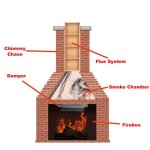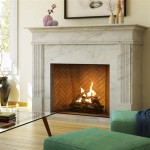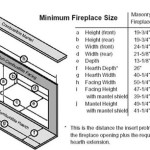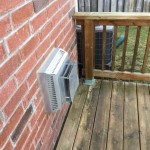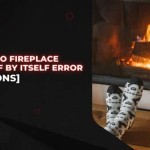Wood Burning Insert Fireplace Installation: A Comprehensive Guide
Wood burning fireplace inserts offer an efficient and aesthetically pleasing way to heat a home. These inserts are designed to be placed inside an existing masonry fireplace, providing improved heating efficiency and reduced emissions compared to an open fireplace. The installation process, however, requires meticulous planning and adherence to safety regulations to ensure optimal performance and prevent hazards.
This article provides a detailed overview of the wood burning insert fireplace installation process, covering essential considerations, preparation steps, and safety measures that should be implemented. It is imperative to note that due to the complexity and potential hazards involved, it is strongly recommended to consult with and potentially hire a qualified professional for this undertaking. Local building codes and regulations must also be thoroughly researched and strictly followed.
Initial Assessment and Planning
Before commencing any installation work, a thorough assessment of the existing fireplace is crucial. This begins with inspecting the chimney for structural integrity. Cracks, crumbling mortar, or blockages can compromise the safety and efficiency of the insert. A professional chimney sweep can perform a detailed inspection and cleaning, identifying any necessary repairs. The chimney must be clean and free of creosote buildup, a highly flammable substance that can lead to chimney fires.
Next, the dimensions of the fireplace opening must be accurately measured to determine the appropriate size of the insert. The insert should fit snugly within the fireplace opening, leaving minimal gaps around the perimeter. Consult the insert manufacturer's specifications for recommended clearances and installation requirements. These clearances are crucial for preventing overheating and potential fire hazards.
Furthermore, the existing hearth should be evaluated to ensure it meets the required dimensions and is constructed of non-combustible materials. The hearth provides a protective barrier against embers and radiant heat, preventing damage to flooring and surrounding structures. Local building codes specify the minimum hearth extension required for wood burning appliances. Failure to meet these requirements can result in code violations and potential safety risks.
Preparing the Fireplace and Chimney
After assessing the existing fireplace, the preparation phase involves cleaning and modifying the fireplace opening. Remove any existing fireplace accessories, such as grates, screens, and decorative elements. Thoroughly clean the fireplace walls and floor to remove soot, ashes, and debris. A wire brush and vacuum cleaner can be used to achieve this. Inspect the firebox for any cracks or damage and repair as necessary.
A key element of the installation process is the chimney liner. Most wood burning inserts require a continuous stainless steel liner that extends from the insert flue collar to the top of the chimney. This liner provides a dedicated pathway for exhaust gases, preventing leaks and improving draft. The liner should be sized according to the insert manufacturer's specifications. Proper insulation of the chimney liner is also crucial. Insulation helps to maintain flue temperatures, reducing creosote buildup and improving overall efficiency.
The installation of the chimney liner involves feeding the liner down the chimney and connecting it to the insert's flue collar. This process often requires specialized tools and expertise. Securely connecting the liner to the flue collar is essential to prevent exhaust leaks into the living space. Use appropriate sealing materials, such as high-temperature silicone, to create an airtight seal. Once the liner is installed, it should be inspected for any gaps or imperfections.
Installing the Wood Burning Insert
Prior to positioning the insert, follow the manufacturer's instructions for connecting any necessary components, such as blowers, fans, or electrical wiring. Ensure that all electrical connections are made according to local electrical codes and that a properly grounded outlet is readily accessible. Blowers and fans enhance heat circulation, improving the overall heating performance of the insert.
Carefully maneuver the insert into the fireplace opening, ensuring that it is centered and level. Adjust the leveling legs, if provided, to achieve a stable and secure fit. Connect the insert's flue collar to the chimney liner using appropriate connectors and sealing materials. Ensure that the connection is airtight and secure. Verify that all clearances to combustible materials are maintained according to the manufacturer's specifications.
Once the insert is in place and all connections are made, install any trim pieces or surrounds that came with the insert. These trim pieces enhance the aesthetic appeal of the insert and provide a finished look. After installation, perform a test burn to ensure that the insert is operating correctly and that there are no exhaust leaks. Carefully monitor the insert and chimney for any signs of overheating or malfunction.
Essential Safety Precautions
Installing a carbon monoxide detector in the vicinity of the fireplace is a vital safety measure. Carbon monoxide is a colorless, odorless gas that can be produced by incomplete combustion. A carbon monoxide detector provides early warning of dangerous levels of carbon monoxide, allowing occupants to evacuate the premises. Regularly test the detector to ensure it is functioning properly.
Adequate ventilation is crucial for safe and efficient operation of a wood burning insert. Ensure that the room in which the insert is installed is adequately ventilated to prevent the buildup of carbon monoxide and other harmful gases. A window can be opened slightly to provide fresh air. It's also important to never block or obstruct the air vents on the insert.
Regular maintenance is essential for ensuring the long-term safety and efficiency of a wood burning insert. Schedule annual chimney inspections and cleaning by a qualified chimney sweep. Regularly clean the insert's firebox and remove accumulated ashes. Inspect the chimney liner for any damage or deterioration. By following these maintenance guidelines, you can prolong the life of your insert and reduce the risk of fire hazards.
Wood Stoves And Fireplaces How To Install A Burning Fireplace Insert Hearth Com Forums Home

Wood Fireplace Insert Installation Overview By Rockford Chimney Supply

How To Install A Fireplace Insert Diy Save Money

Fireplace Insert Installation Wood Burning Inserts

Ventis Hei240 Wood Burning Insert Rockford Chimney

Fireplace Insert Installation Wood Inserts Gas Pellet And Electric

Why A Wood Burning Fireplace Insert Bethesda Md Service

Lodi Wi Installing Fireplace Insert Remodel

Wood Fireplace S Installation Chimney Sweeps Of America

Why Get A Fireplace Insert Wood Gas Inserts In Tn Al
Related Posts


